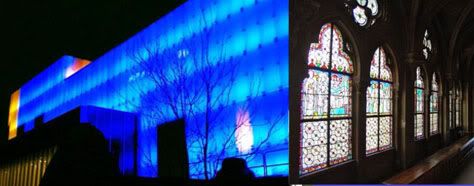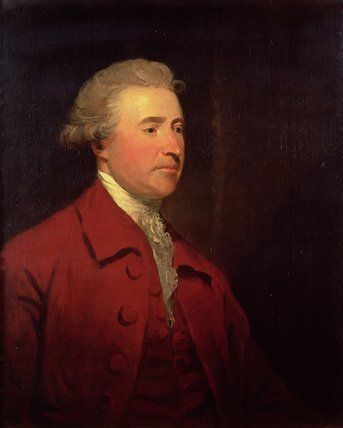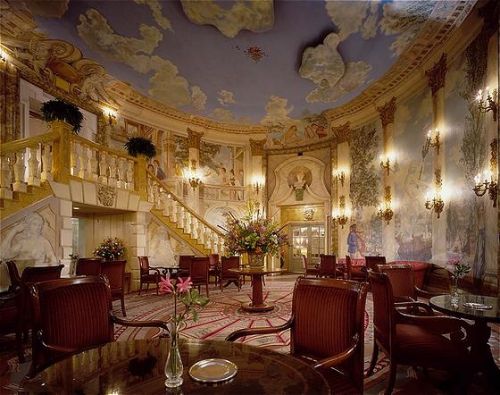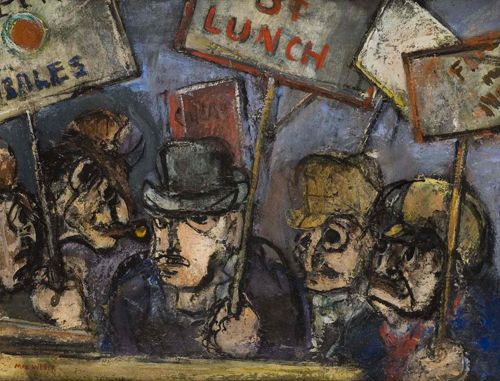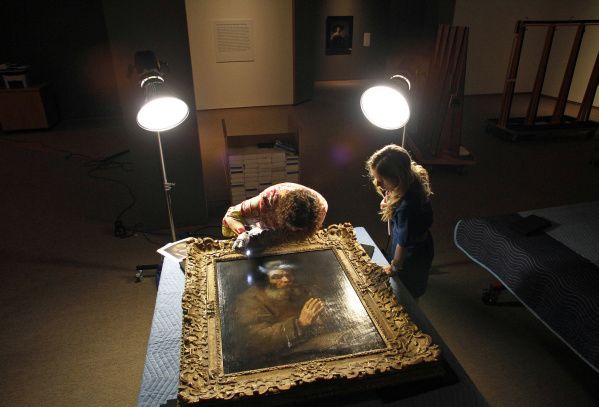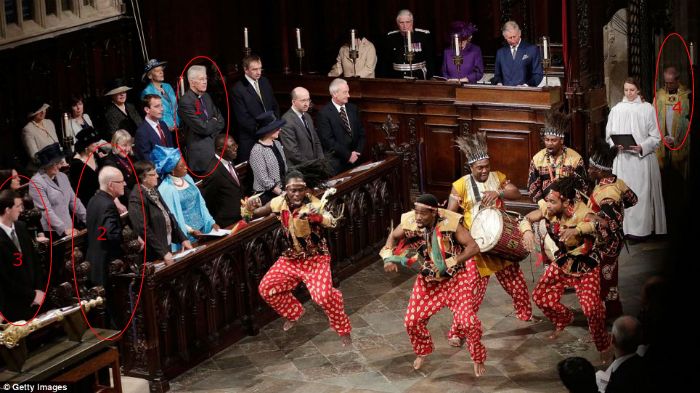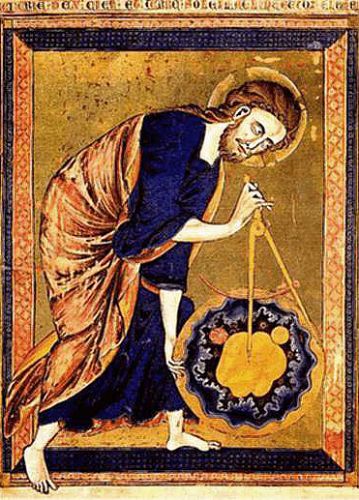
God, the Divine Architect
Illumination from Bible moralisée
c. 1250
Österreichische Nationalbibliothek,
Codex Vindobonensis 2554
Today is Good Friday.
I wasn't going to post anything, but these two posts - this one and the one below: Throwing Out Ornament - seem fitting for this Holy Day, but also a day that reminds us of the losses we face.
-------------------------------------------------------------------------------------------------------------------------------------------------------------
Why Contemporary Architecture is Against God and Man
By Nikos Salingaros and James Kalb
Crisis Magazine
August 13, 2012
Architecture is the setting for how we live and the expression of how we think. It reflects our shaping of the world in order to inhabit it, and the geometry of what we build is far from neutral. The built environment, like the biological and other natural systems that it engages, needs to function reliably in complex and adaptive ways on many different levels. Such adaptive and sustainable systems have similar characteristics that, despite distinct origins, develop in a broadly similar manner.
The need to provide shelter from the elements and serve everyday needs led to the construction of roofs and walls that defined spaces adapted to human use. Traditional buildings and cities were assemblies of such basic components, put together in ways that had been found to promote particular and overall functioning. The New York row house, the New England village green, and the Mediterranean arcade and plaza all suit the setting and way of life in which they grew up.
More importantly, going beyond mere function, those structures combined ornament and other details that somehow seemed necessary. Even when structures were designed as a whole, their form and organization followed the evolved principles that had led to successful construction in the past. The results included the great historical styles of architecture, and the most-loved and most functional buildings and cities East and West.
Times change, and not always for the better. The advent of architectural modernism in the first decades of the twentieth century suppressed traditional styles and complex evolved forms in favor of simple concepts and striking images. The result was an approach to the built environment that lent itself to public relations and propaganda—it played well in manifestos and glossy architecture magazines—but was less functional, less adaptive, and less human and engaging.
What happened, why did it happen, and why do people stick with an approach to building and design that evidently does not work to engage our complex faculties? The answer goes to the nature of science and of freedom: whether they have to do with understanding reality and living in accordance with it, or with the imposition of arbitrary will.
Our educated world does not distinguish science from technology, because it confuses understanding with arbitrary control. Modernism had to do with the latter. It was an attempt to liberate technology from reality that took the form of a massive but unscientific application of technology to shape the world into an industrial dream image. Hence the emphasis on unfamiliar invented forms, sharp edges, and gleaming surfaces. The effort was entirely unscientific because no thought was given to discovering how human beings actually interact with their environment, or whether we need certain specific geometrical features just like we need nourishment and air, or to understanding how human beings interact with each other to create a city. Modernist architects just drew forms on paper that looked like machines and those in power built them.
The motivation was essentially political and oriented toward domination. The revolutionary movements that followed World War I wanted a break with the past, and especially the look of the past. The world revolution would rebuild humanity through industrialization, so these movements embraced buildings that looked like the machines of the time: sleek, white, and metallic. States, both on the left and on the right, loved this depersonalized approach to building, where the individual no longer matters and everything is sacrificed to an imposed utopian vision. Aspects of architectural modernism are prominent in Nazi and Soviet architecture, and the capitalist state also turned the machine into an icon. When Le Corbusier died both Lyndon Johnson and the Soviets expressed their sense of profound loss.
The modernist architectural pioneers made up wild explanations for why the new designs and materials were supposedly superior, practically and ethically, and were rewarded with commissions, fame, and academic positions. Human checks and balances disappeared, the industrial system took over, and traditional construction techniques and a vast network of local building and craft traditions went out of business.
The outcome of these developments is something resembling a totalitarian system that unites immense financial and industrial interests with a pseudo-religious fanaticism. There are governments and corporations that wish to flaunt their power through monstrous and arrogant building schemes, industries that produce very expensive high-tech materials, developers who want to make their money work but have no moral constraints, and architects who are willing to do anything to obtain a commission. Politicians get pulled into supporting the ideology by the chance to gain media coverage and campaign contributions. And the gullible public naively believes all it reads in the conformist media.
There is something profoundly anti-natural about the results. By contradicting traditional evolved geometries, modernist and contemporary architecture and urban planning go against the natural order of things. When an architect or planner ignores the need for adaptation and imposes his or her will, the result is an absurd form—an act of defiance toward any higher sense of natural order. There is no room for God in totalitarian design. What religious believer is helped to greater devotion by a modernist Church? Who can love materials hostile to our touch and sight, surfaces and oppressive spaces that sometimes suggest violation and death? Architectural modernism implies a sort of cosmic rebellion against order and life.
One lesson of contemporary architecture is that there exists a basic need for religious belief. Ours is not the secular world everyone pretends it to be. Architects tend to follow a cult of images that arose in the early twentieth century from the desire to break with all elements of the past, especially inherited human culture. Contemporary architects professing to be atheistic champions are in fact promoting an ideology with religious overtones. Their buildings, we are told, are “iconic,” and the attempt to reshape the built environment in accordance with pure concept, as Le Corbusier proposed in his plan for Paris, is an attempt to reshape the world in which we live into an expression of will and inhuman rationality.
The ideology of contemporary architecture is detached from nature and from God. It creates buildings that are dangerously detached from human beings. Traditional religions, despite periodic failings and fanaticisms, arose out of the evolution of human culture, and are thus far more grounded in real human needs. More importantly, they celebrate humans as rich and complex beings, with capabilities far beyond those of a machine. This makes religions more rational, and less divisive, than pseudo-religions based on irrational will. A Greek or Hindu temple, a sixteenth-century mosque, or a Gothic cathedral connects us to each other, to the past, and to the world. A modernist building or urban design does not. Even someone from a different civilization and religious tradition can tell the difference.
For millennia, houses of worship focused the design and construction talents of the populations onto their love of God. Traditional religious architecture is above all an architecture of life, from the overall form down to the smallest ornamental detail, because God is identified with life and with love. After a cult of alien images supplanted God in the early twentieth century, churches were built to the glory of the cult, no longer to the God of living beings. Today we see merchants of an architecture characterized by a geometry that avoids living structure—the currently fashionable star architects—who are commissioned to build religious buildings totally devoid of humanity and love, and so of God. Is this the suicide of the Great Religions, intentionally suppressing their core values?
These observations on architecture have implications for social life. Structural rules developed for buildings and urban design cannot be applied directly to human society and political systems, but the same fundamental principles are at work. In general terms, evolved societal complexity needs to be respected. Politically, consideration of the nature of functional and adaptive systems points to traditional social values and the individual freedom to choose, and away from the cult of anti-intuitive expertise in the service of the globalized consumerist system. That means favoring traditional societal structures that grow up from the connections found in daily life and have proven their value over generations. This result is antithetical to the insistence on erasing tradition and creating a brave new society based on industrialized principles and untested utopian ideas that promise progress and liberation but deliver the precise opposite.
So what to do? Contemporary society has detached people from the real world, and especially from the traditional, spiritual world where a higher sense of order resides. Natural perceptions made concrete in tradition have been replaced by ideology and constructed images. Ordinary good sense and a human grasp of reality somehow must be restored.
New architectural theories developed by Christopher Alexander and his followers attempt to do so by giving scientific reasons for things, such as the need for small-scale ornament, that in the past were simply assumed. With ordinary people a brief introduction is enough for them to get the point and tune into living structure. The problem is with the educated. Architects in particular have been taught to block their own sensory apparatus so as to support approved products of modernity. That’s necessary because preferring cold, sterile, or absurd forms goes against our need to experience biophilic structures in our immediate environment. This aspect of education in the West is as effective in promoting ignorance as the fanatical indoctrination seen in other parts of the world.
It is hard to know how it will end. So far the results of our protests and denunciations have been more reminiscent of Cassandra than of the original Alexander and his generals. Perhaps the current situation will end with societal collapse when we run out of cheap energy? Or when the developing world realizes the deception? Already the West is hated through its architectural expressions: You cannot fool traditionally religious people into believing that monstrous buildings hostile to human sensibilities are good.
All is not lost, of course. Humanity is irrepressible, and thousands of buildings reflecting the human spirit are erected around the world today and in the recent past, even though we never hear about them. They are indigenous, vernacular, modest, many of them self-built, all expressions of human intuition about what a nutritive environment has to be. Even the buildings in third-world favelas have more life in them than prize-winning modernist or postmodernist structures. More formal buildings built in regional traditional styles also abound: Again, you don’t see them in the media. There are also quite a number of contemporary architects working with the classical form language, and many of their buildings are wonderful. Architects who relearn how to design classical buildings free up their intuition to perceive nutritive spaces, forms, and surfaces, and therefore their product is adaptive to human sensibilities.
In the end, perhaps after horrible upheavals, the defects of contemporary architectural movements will certainly destroy them. In the meantime, those who see the nature and effect of those movements must continue to do battle in season and out of season. They owe that to those who came before, to their fellow citizens, and to their posterity.
This essay first appeared on Public Discourse: Ethics, Law, and Common Good, the online journal of the Witherspoon Institute of Princeton, NJ, under the title “Against the Architects of Empire” and is adapted from an earlier interview conducted by James Kalb.
-------------------------------------------------------------------------------------------------------------------------------------------------------------
Posted By: Kidist P. Asrat

